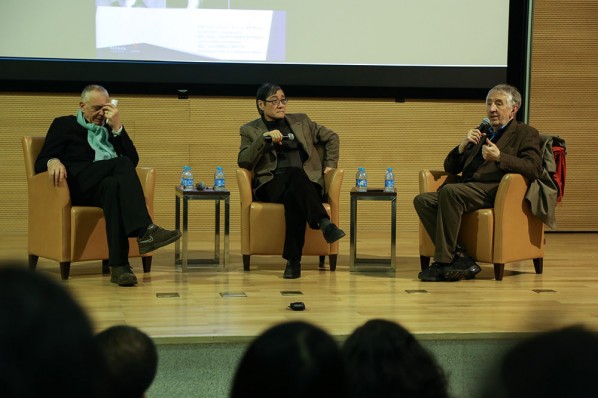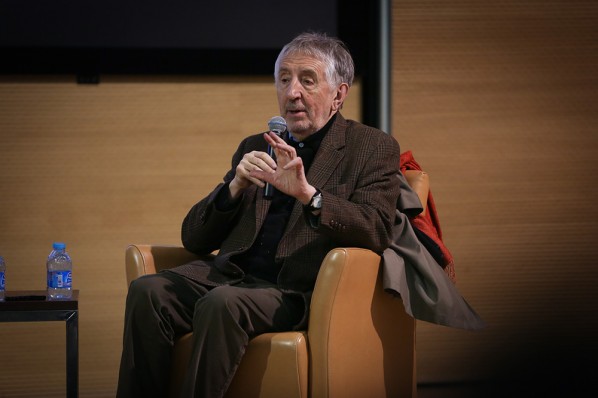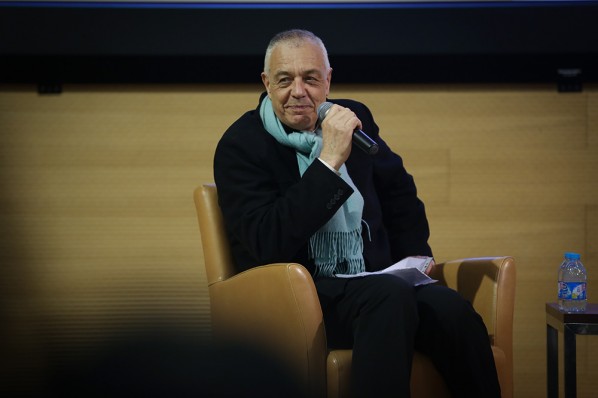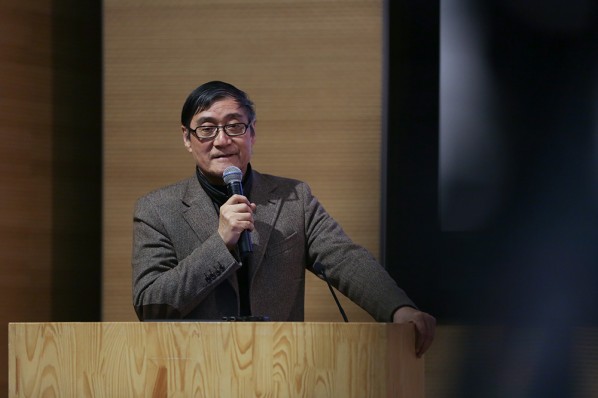
“Another Modernity?”, a lecture by Pan Gongkai, President of the CAFA, Hans Belting, a famous German art historian, a counsel of ZKM, and Michael Kahn-Ackermann, a sinologist, and founder of the Goethe Institute, was held at the Academic Lecture Hall of CAFA Art Museum, at 18:30 on March 21, 2013. Pan Gongkai, Hans Belting and Ackerman respectively gave their lectures, following by a Q & A session.
Hans Belting: The End of the History of Art?
Belting said he was really honored to visit CAFA, and he thought the entire artistic atmosphere of CAFA was very good. Before the lecture he had a conversation with his Chinese friends, he learned that there were many misconceptions about his theory “the end of the history of art”, therefore he would like to take the opportunity to clarify them. He initially said that his theory “the end of the history of art” was often garbled with “the end of art” of Arthur C. Danto. The history of art and art are two totally different things, the history of art was about the issue of narrative anthropology, a topic about how humans talked about art, and he had always disagreed with “the end of art”. Subsequently, he talked about the background of the theory of “the end of the history of art”. When he was appointed as the Academic Chairman of the History and Theory of Art in the University of Munich, replacing Hans Sedlmayr, all his colleagues at the time were the students and admirers of the former, which forced him to follow his traditional way of thinking of the history of art, making him very unhappy. Therefore, Belting issued “the end of the history of art?” in his inaugural speech. This was a disturbing topic, almost becoming a scandal at the time, attracting a lot of criticism and misunderstanding. Ten years later, he published a book entitled “The End of The History of Art”, dubbed the same title to two completely different books, winning the Art Progress Award that year. It was awkward that only two of the thirty books he had written were translated into Chinese, including “The End of the History of Art?”, “Art History after Modernism”.

Then Belting returned to the interpretation of “the end of the history of art”. He believed that it meant the end of the linear narrative state of contemporary art criticism. He said that the concept of art history was a linear, progressive view of historical construct that emerged in the 19th Century, and he was opposed to this universal value and narrative. Philosopher Hegel put forward the relationship between the artists and the spirit of the times, that the mission of artists was to present the culture of the generation, which Belting queried the validity of his statement.
Belting thought that the Western (European and American) art presented was based on nothing more than the artistic concept of Romanticism of the early 19th century, the artists were in need of education and training, rather than burdening them with any functions or responsibilities, which he had criticized. In the 19th century, many artists were suicidal because of Modern Art as it was not a pure concept and entity, performing a concept on an entity, the work was a mixture of artistic skills with entity and concept, which was difficult to achieve. The popular form of the romantic historical art view was the “Mona Lisa”, a favorite work for different groups to reach a consensus: it represented the perfect art.
He concluded, rather than negated the artistic concept, “the end of the history of art?” presented a process that shows how some artistic ideas became popular and a public concept.
Michael Kahn-Ackermann: Modernization? Modernity? Chinese Quality?
Ackerman humbly said that he was neither a scholar, nor an art historian expert, just talking about the idea about “narrative” through his personal experiences. In 1975 Ackerman initially took a trip to China, in the process of studying in Peking University, he found that the discipline of art history didn’t exist in China. When he returned to China in 1985 and found that everything had changed, and modernization was still at the core. Chinese artists like bandits fled to the contemporary art market of the West, taking away all the things and wearing them on their bodies, very strange, very interesting, all in the name of “modernization”.

He believed that the goal of modern Chinese art was to save the nation, but “bandits” in the 1980s considered neither the national salvation, nor the market, which didn’t exist at all, they just wanted to find a way of self-liberation. Since the 1990s, he found two important phenomena, firstly the Chinese began to reflect on tradition, and against the blind imitation of the Western; secondly China began to develop their own art market. Ackerman felt that it presented a simple narrative in China: art was something which could be sold as art.
For the issue of the blind imitation of Western art, he referred to the emergence of a new concept of Chinese academics – “Chinese quality”, trying to avoid the so-called “modernity” of the Western trap, to avoid all grand narratives. Ackerman suggested that facing the complex realities in China, back to thinking about what “modernity” was, and the meaning of modernization? What was an alternative modernity? It was also the reason why he was planning a contemporary Chinese ink painting exhibition.
Pan Gongkai: Dispersion and Generation
Pan Gongkai thought that these narratives were necessary, insurmountable stages of development in the process of searching for the truth. In the face of the limitations of previous narratives and the moment of the end of the single narrative, how to develop in the future? How to open a new possibility?

In the late 1980s and early 1990s, Pan had written a paper entitled “Art dose not End”, not involved in the issue of art history. Pan was in favor of Lyotard’s view that the previous grand narratives would disappear, but the small narrative might still generate ideas. Belting was looking for diversity in the context of globalization.
In the final Q & A session, Belting added a supplement to his understanding of the trend of contemporary art: firstly, the old icon didn’t exist any more; contemporary art was no longer a part of the tradition; thirdly, the development of new media opened a new freedom for art, and media art would bring a new cosmopolitanism, media accessing the world at all levels to become part of the cultural carrier.
Journalist: Duan Ziying, translated by Chen Peihua/CAFA ART INFO
Photo: Hu Zhiheng/CAFA ART INFO




























